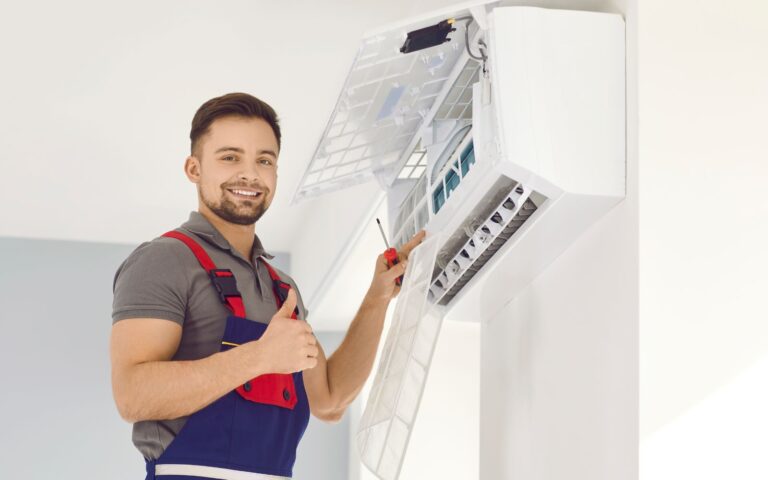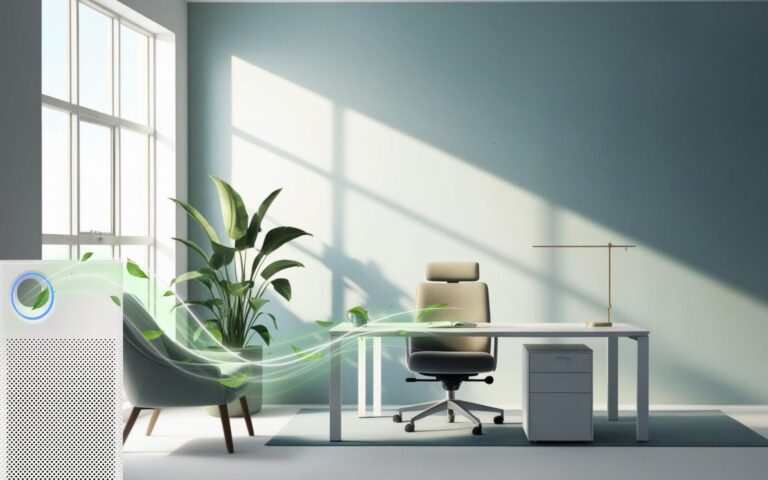Understanding the Role of Air Ventilation in Green Buildings

Green buildings are more than architectural trends- they’re a key part of a sustainable future. Proper air ventilation is a significant factor in their success.
It’s not just about keeping spaces cool or fresh; it’s about ensuring a healthy indoor environment while improving energy efficiency and reducing carbon emissions.
In this article, we’ll dive into the role of air ventilation in green buildings, how it impacts indoor air quality, and the technologies that make it happen.
Whether in the construction industry, planning a sustainable project, or simply curious about creating a comfortable indoor environment, you’re in the right place.
Key Takeaways
- The role of air ventilation in green buildings focuses on prioritizing indoor air quality while minimizing energy consumption and carbon emissions.
- Effective ventilation systems use natural ventilation, mechanical systems, and hybrid strategies to bring in fresh air and remove pollutants.
- Proper ventilation combats indoor air pollution, reduces sick building syndrome, and enhances overall well-being.
- Green buildings with efficient ventilation strategies support sustainable development goals, contributing significantly to environmental protection.
- Innovations like demand-controlled ventilation, energy recovery ventilators, and passive design enhance the energy performance of buildings.
Why Air Ventilation Is Essential in Green Buildings

Ventilation is the backbone of any green building design, impacting everything from health to energy use. Here’s why it matters:
1. Indoor Air Quality and Well-Being
- Indoor air pollution can lead to headaches, fatigue, or even more serious conditions like sick building syndrome.
- Ventilation systems bring in fresh air and filter out pollutants like volatile organic compounds (VOCs), mold, and carbon dioxide to create a healthier space.
- Improved air circulation fosters a more comfortable indoor environment, essential for both work and living spaces.
2. Energy Efficiency
- Green buildings aim to reduce energy consumption without compromising comfort.
- Advanced air conditioning systems and mechanical ventilation systems, such as energy recovery ventilators (ERVs), reuse heat or coolness from exhaust air, cutting energy waste.
3. Sustainability and Environmental Impact
- Proper ventilation reduces reliance on traditional HVAC systems, lowering carbon and greenhouse gas emissions.
- Using natural ventilation systems also helps reduce air pollution, supporting global efforts to combat climate change.
4. Comfortable Indoor Environment
- Balanced air flow ensures stable temperatures and humidity levels, creating a more comfortable indoor environment.
- Natural airflow and sunlight integration, part of passive design strategies, create naturally inviting spaces.
Ventilation Systems in Green Buildings

Green buildings use innovative ventilation systems to balance indoor air quality and energy efficiency. Let’s explore the key types:
1. Mechanical Ventilation Systems
- These systems control air flow using fans, ducts, and filters.
- Examples include:
- Energy Recovery Ventilators (ERVs): Transfer heat and regulate humidity for energy-efficient air conditioning.
- Demand-Controlled Ventilation: Adjusts airflow based on occupancy or indoor conditions, reducing unnecessary energy use.
2. Natural Ventilation Systems
- Leverage outdoor air quality through windows, vents, or other building features to bring in fresh air.
- Benefits:
- Reduces the need for cooling systems or HVAC systems.
- Enhances the connection to the outdoor air and nature.
3. Hybrid Ventilation Systems
- Combine natural ventilation with mechanical systems for greater flexibility.
- Example: Use natural airflow in moderate climates and switch to mechanical systems during extreme weather conditions.
Strategies to Optimize Air Ventilation in Green Buildings

To maximize energy performance and indoor environmental quality, green buildings follow these ventilation strategies:
1. Design for Natural Ventilation
- Place windows and openings strategically to enhance cross-ventilation.
- Incorporate passive design strategies that use natural airflow and reduce reliance on polluted air from HVAC systems.
2. Utilize Energy-Efficient Technologies
- Invest in energy recovery ventilators or demand-controlled ventilation for cost-effective, sustainable solutions.
- Innovative HVAC systems are used to monitor and adjust air flow dynamically.
3. Integrate Indoor Plants
- Plants act as natural filters, improving indoor air quality and reducing air pollutants like VOCs.
- They also enhance the built environment, creating a calming indoor space.
4. Focus on the Building Envelope
- A well-sealed building envelope prevents leaks, ensuring that conditioned air circulation stays efficient.
- Use sustainable building materials to avoid emitting harmful chemicals into the indoor environment.
5. Monitor and Maintain Ventilation Systems
- Regularly inspect mechanical systems to keep them running efficiently.
- Clean filters and ducts to maintain consistent airflow and reduce indoor air pollution.
Real-World Applications

1. World Green Building Council Initiatives
- Promotes sustainable development by advocating for better ventilation systems in buildings worldwide.
2. Energy-Efficient Office Environments
- Modern offices use demand-controlled ventilation and natural ventilation to maintain productivity and comfort.
3. Sustainable Urban Planning Projects
- Cities incorporate sustainable design principles, blending outdoor air quality with efficient building systems to combat global warming.
Benefits of Proper Air Ventilation

When done right, ventilation systems offer numerous benefits:
- Improved Air Quality: Filters out air pollutants and ensures clean air indoors.
- Energy Savings: Reduces energy consumption through advanced ventilation systems.
- Better Health: Minimizes the risk of illnesses caused by indoor air pollution.
- Environmental Protection: Helps reduce carbon dioxide emissions and supports sustainable development goals.
- Increased Comfort: It creates a comfortable indoor environment with better temperature and humidity control.
Summary
The role of air ventilation in green buildings cannot be overstated. It improves indoor air quality, enhances energy efficiency, and creates healthier spaces.
By combining innovative technologies like energy recovery ventilators with natural ventilation systems, green buildings significantly reduce greenhouse gas emissions and foster a sustainable future.
Whether designing existing buildings or planning new projects, prioritizing ventilation is essential for a healthier and greener world.
Frequently Asked Questions
How Does Ventilation Improve Indoor Air Quality in Green Buildings?
Ventilation reduces indoor pollutants, like VOCs and carbon dioxide, by introducing fresh air and removing stale or polluted air.
What Are Natural Ventilation Systems?
These systems use outdoor air and strategic design features, such as windows and vents, to enhance air flow without relying on mechanical systems.
How Do Ventilation Systems Help Reduce Energy Consumption?
Technologies like energy recovery ventilators recycle heat or coolness from exhaust air, reducing the load on HVAC systems.
Why Is Ventilation Important for a Healthy Indoor Environment?
Proper ventilation reduces indoor air pollution, prevents conditions like sick building syndrome, and promotes overall well-being.
How Can Green Building Design Integrate Sustainable Ventilation Strategies?
Green buildings use passive design strategies, efficient mechanical ventilation systems, and innovative technologies to optimize air circulation and reduce carbon emissions.





